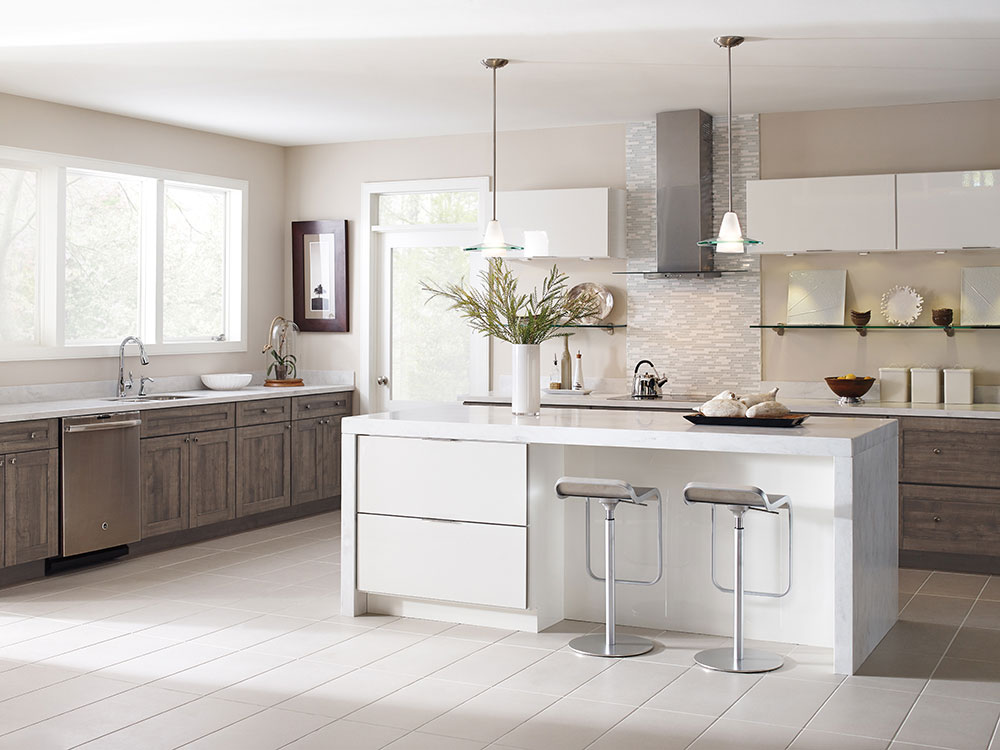
Remodeling your kitchen is a significant project that requires careful planning and execution. One of the most common questions homeowners ask is, how long does a kitchen remodel take?
Understanding the timeline can help you prepare for the process and manage your expectations. In this blog, we'll explore the factors that influence the duration of a kitchen remodel. We'll also provide a comprehensive overview of what to expect.
Week 1-4: Planning and Permitting
Week 5-6: Demolition and Preparation
.Week 7-8: Rough-In Work
Week 9-10: Cabinetry and Countertops
Week 11-12: Flooring and BacksplashDefinition: A protective wall covering behind a kitchen counter, often made of tile, glass, or metal... Read More
Week 13-14: Final Touches and Inspections
The extent of the remodel will have a significant impact on the duration. A minor update, such as replacing countertops and appliances, can be completed in a few weeks.
Whereas a complete overhaul with structural changes can take several months, answering the question, how long does it typically take to remodel a kitchen?
Custom cabinetry, countertops, and unique design features can add several weeks to the timeline. Custom orders often have longer lead times compared to stock or semi-custom options.
Obtaining the necessary permits and scheduling inspections can introduce delays. It's essential to factor in the time it takes for local authorities to approve your plans and conduct inspections at various stages of the remodel.
Supply chain issues can delay the arrival of materials, and high demand for skilled labor can lead to scheduling challenges. Pre-ordering materials and securing contractors well in advance can mitigate these delays.
Keep an open line of communication with your contractor. Regular updates and prompt responses to questions or concerns can prevent misunderstandings. This will help keep the project on track.
Understand that unforeseen issues can arise, such as discovering water damage or outdated wiring behind walls. Building a buffer into your timeline for these surprises can help manage stress.
Consider setting up a temporary kitchen in another part of your home. This will help you maintain some normalcy and avoid eating out constantly, which can save money and reduce inconvenience.
Have a contingency fund set aside for unexpected expenses. Typically, it's wise to allocate an extra 10% to 20% of your budget for unforeseen costs that may arise during the remodel.
While it's natural to want your remodel completed quickly, rushing the process can lead to mistakes and compromises in quality. Focus on finding a balance between efficiency and high-quality workmanship.
Setting a realistic timeline helps manage expectations for both homeowners and contractors. It ensures everyone is on the same page regarding the project's duration, reducing misunderstandings and frustration.
A well-defined timeline allows for better coordination and scheduling of tasks. Contractors can allocate resources efficiently, minimizing downtime and maximizing productivity.
A longer-than-expected timeline can result in increased costs due to extended labor hours, rental expenses, and additional materials. By accurately estimating the duration, homeowners can better manage their budget and avoid unexpected financial strain.
Opt for pre-designed layouts and standard configurations to expedite the design phase. This reduces the time spent on revisions and approvals, allowing construction to commence sooner.
Consider using prefabricated or modular components for cabinets, countertops, and other fixtures. These pre-made elements can be quickly installed, reducing construction time significantly.
Where possible, tasks should be performed simultaneously rather than sequentially. For example, while plumbing and electrical work are being completed, other teams can focus on demolition or framing, minimizing idle time.
Utilize project management software or apps to streamline communication, track progress, and manage timelines effectively. Clear communication channels and regular updates ensure everyone stays informed and accountable.
Supply chain disruptions and delays in material delivery are common challenges. To mitigate this, work with suppliers who have reliable inventory and alternative sourcing options.
Outdoor construction work may be affected by adverse weather conditions, such as rain or extreme temperatures. Planning for seasonal variations and scheduling indoor tasks during inclement weather can help minimize delays.
Finding problems with the structure when tearing down or building can slow things down. Before starting your remodel, check everything carefully. Also, set aside money in your budget in case you need to fix anything.
Delays in obtaining permits or scheduling inspections can stall progress. Work closely with local authorities, submit required documents promptly, and stay informed about the permit approval timeline to prevent unnecessary delays
Transform your kitchen efficiently with Bradco Kitchens + Baths! Contact us today at 323-936-3457 to schedule a consultation and experience expert guidance throughout your remodeling project.
Let's work together to create the kitchen of your dreams, tailored to your timeline and budget. Whether you're looking for a quick refresh or a complete overhaul, our team is here to ensure a seamless and satisfying renovation experience, answering the question, how long should a kitchen remodel take?
Don't delay any longer—reach out to Bradco Kitchens + Baths and take the first step towards your ideal kitchen transformation!
BOOK AN APPOINTMENT